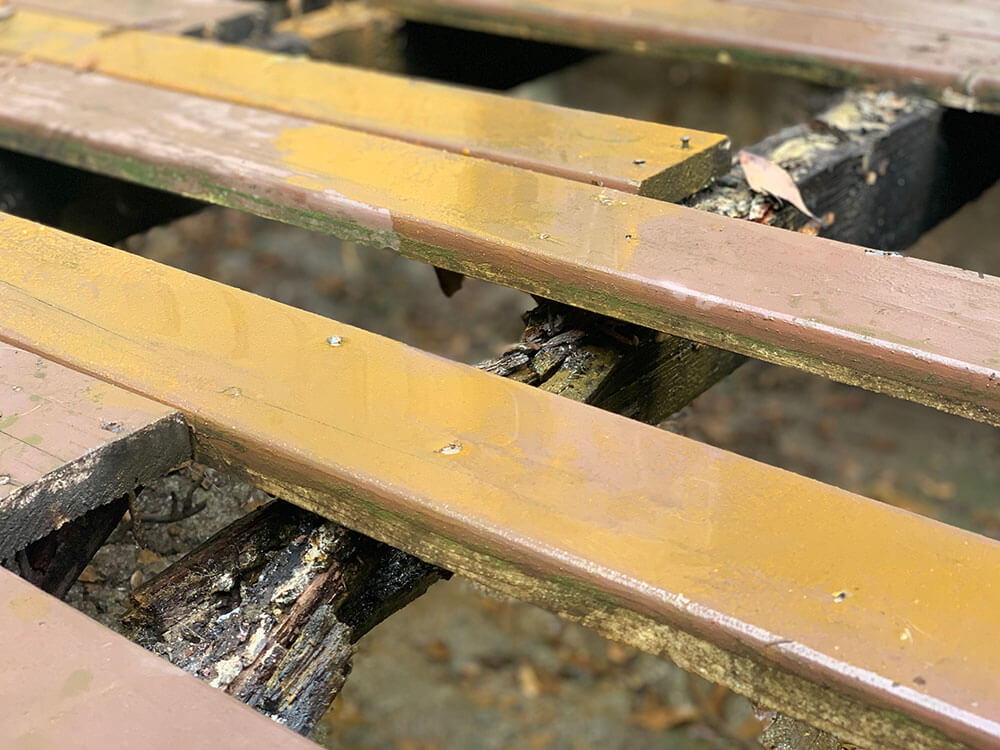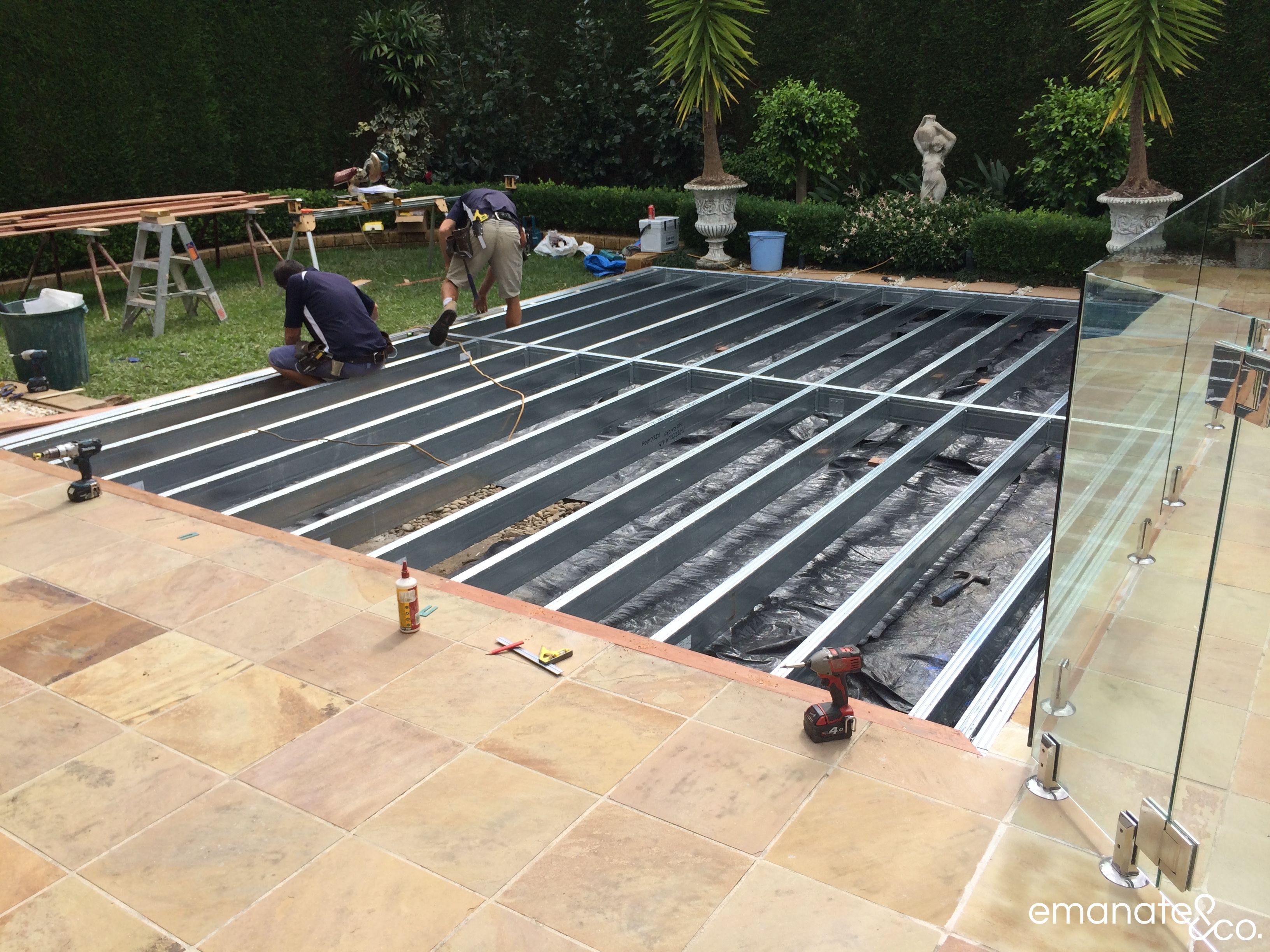There’s nothing like stepping outside and feeling warm timber against the soles of your feet.
A professionally installed timber deck adds time-honoured appeal to any alfresco outdoor room. However, the humble deck also takes a lot of punishment from heat, rain, humidity and us humans walking on it – punishment that eventually adds up.
If you’ve got an older deck that’s seen better days, here’s our top five signs that it could be the time to replace it.
1. Structural damage
First and foremost, you should ensure that the underlying structure of your deck is sound. Examine the posts, beams, joists and rails for any signs of wood rot. These are the most important parts of your deck structure – think of them like the bones in your body.
Can you put a key right into the timber? If the answer is yes, it could be time to replace your deck.
2. Damaged or rusted hardware
Pay close attention to all the railings, nails, screws, hinge and latch pins and any other hardware on your deck to ensure they are securely fastened and in good condition. If any pieces of hardware are loose, bent, rusted, or corroded, it may be time to consider a deck upgrade.
Are your decking nails sticking up out of the decking boards? Are they grabbing and catching your feet every time you walk over them? Then you may want to start thinking about replacing your deck.
3. Worn out or broken timbers
The timbers that make up the surface of a deck aren’t immune to the passage of time, damage from the elements, or simply from being walked upon. Visually inspect the timbers for cracks or termite holes; you should also walk across the deck (carefully) testing for uneven timbers or wood that gives or shifts underfoot. You shouldn’t be feeling a ‘bounce’ in your timber. If you find any of these, you should replace your deck sooner rather than later.
4. Mould and mildew
As wonderful as Sydney’s climate is, its year-round warmth, high humidity and amount of rainfall is the perfect combination of conditions to promote the growth of mould and mildew. Inspect your deck (most importantly, the underneath of your deck) for mould growth: if you find mushroom-like moulds or fungal growths, you could have serious damage to contend with. Small patches can be cleaned with a fungicide, but it’s safer to start from scratch if there’s extensive mould growth.
5. Wood rot
Last but not least is wood rot: an issue that can be the death knell for an entire deck. If you see even one spot of rot in your wooden deck, carefully inspect the entire structure as wood rot can creep up quickly and seriously destabilise your deck. If rot is affecting more than one or two timbers, it’s best to replace your entire deck with a new structure.

Time to replace your deck? Transform it into the ultimate outdoor alfresco room with Emanate & Co, Sydney’s leading experts in individually tailoring outdoor spaces to create luxurious and spacious entertaining and relaxing zones. If you’re ready to turn your dream alfresco living area into reality, contact us today.



